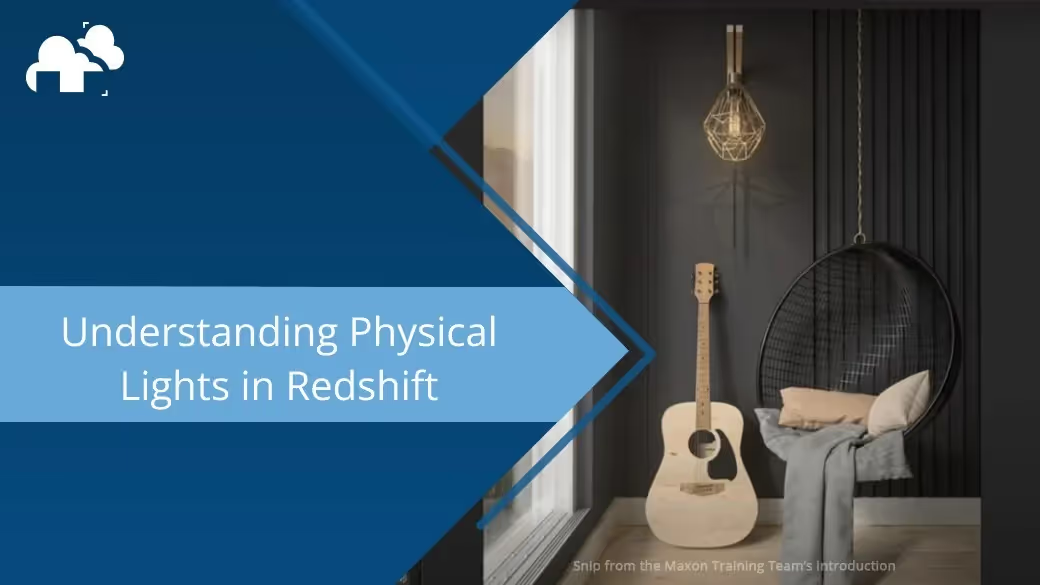
Lights are a critical part of any 3D scene. They illuminate the objects and materials, create shadows, reflections, and refractions, and set the overall mood and tone. In Redshift, there are many different types of lights available, giving artists a high degree of control and flexibility. One of the most versatile light types is the Redshift Physical Light.
Ready to take your Redshift renders to the next level? Our powerful Redshift render farm is equipped with a fleet of high-performance GPU nodes to accelerate your Redshift rendering. Try us out for free, and you'll be able to submit and monitor jobs directly from your favorite 3D software like 3ds Max, Maya, or Cinema 4D.
.avif)
The Redshift Physical Light is designed to simulate real-world lighting as accurately as possible. It supports a range of light types including point, spot, directional, area, dome, IES, and sunlight. The parameters and behaviors are based on physical properties like intensity, color temperature, decay, and unit types. This makes Physical Lights ideal for photorealistic rendering, architectural visualization, product design, and any application where realism is critical.
Physical Lights have many advantages over simpler light types:
In this in-depth guide, we'll explore how to set up and use the various features of Physical Lights to achieve realistic and physically accurate lighting in Redshift.
The general parameters control the overall behavior of the Physical Light.
On/Off
The On/Off switch simply turns the light on or off. This is useful for quickly toggling a light for comparison.
Light type
This dropdown specifies the type of light. The options are:
Each light type has its own unique controls and behaviors. The type can be changed at any time to turn a point light into a spot for example.
The preview options control how the light appears in the viewport for interactive feedback:
Intensity
The intensity parameters determine the overall brightness and photon emission of the light:
The color of the light can be set directly to an RGB value, or by temperature in degrees Kelvin for physically accurate colors. Lower temperature values appear more yellow/red, while higher values are blue.
Area lights have the following shape options:
The shape parameters control the size, aspect ratio, and appearance of the area light. Area lights naturally create soft shadows based on their size.
Any mesh can be used as an area light source. The mesh defines the shape and appearance of the area light. Mesh lights work the same as other area light types.
Spot lights have directional cone-shaped beams. The main spot controls are:
These parameters allow detailed control over the shape and intensity profile of the spot light cone.
Shadows are a defining aspect of lighting. The shadow controls for physical lights include:
Softer more diffuse shadows create a different lighting mood than harsh sharp shadows. The transparency setting is useful for creating faded shadows as if light is passing through a translucent surface.
Physical Lights in Redshift can be assigned to light groups for compositing and rendering control via AOVs. Lights can also be linked to specific objects for selective lighting.
Light linking allows precise control over which objects receive illumination and shadows from specific lights. This is useful for example to ensure a key light only lights characters and not the background.
The contribution parameters give you full control over how much a light influences various lighting components:
This offers enormous flexibility. For example, you could create a light that provides strong diffuse illumination but does not cast any specular highlights. Or a light that only affects volumetrics.
Physical Lights can emit photons to generate caustic effects like concentrated water reflections and glass refractions.
The main caustic parameters are:
For best results, use high-quality photon mapping with a large number of caustic photons.
There are a few legacy options that can be enabled to match the lighting in old scenes:
Generally, these should be left disabled for most scenes to ensure the highest quality.
In summary, Physical Lights provide a full-featured lighting toolkit for photorealistic rendering and maximum control. The accurate simulation of real-world lighting behavior, advanced parameters, and built-in physically-based presets allow fast setup of incredibly realistic lighting. Whether matching a photograph, designing a product, or creating an imaginary world, physical lights offer the power and flexibility to bring any lighting concept to life.